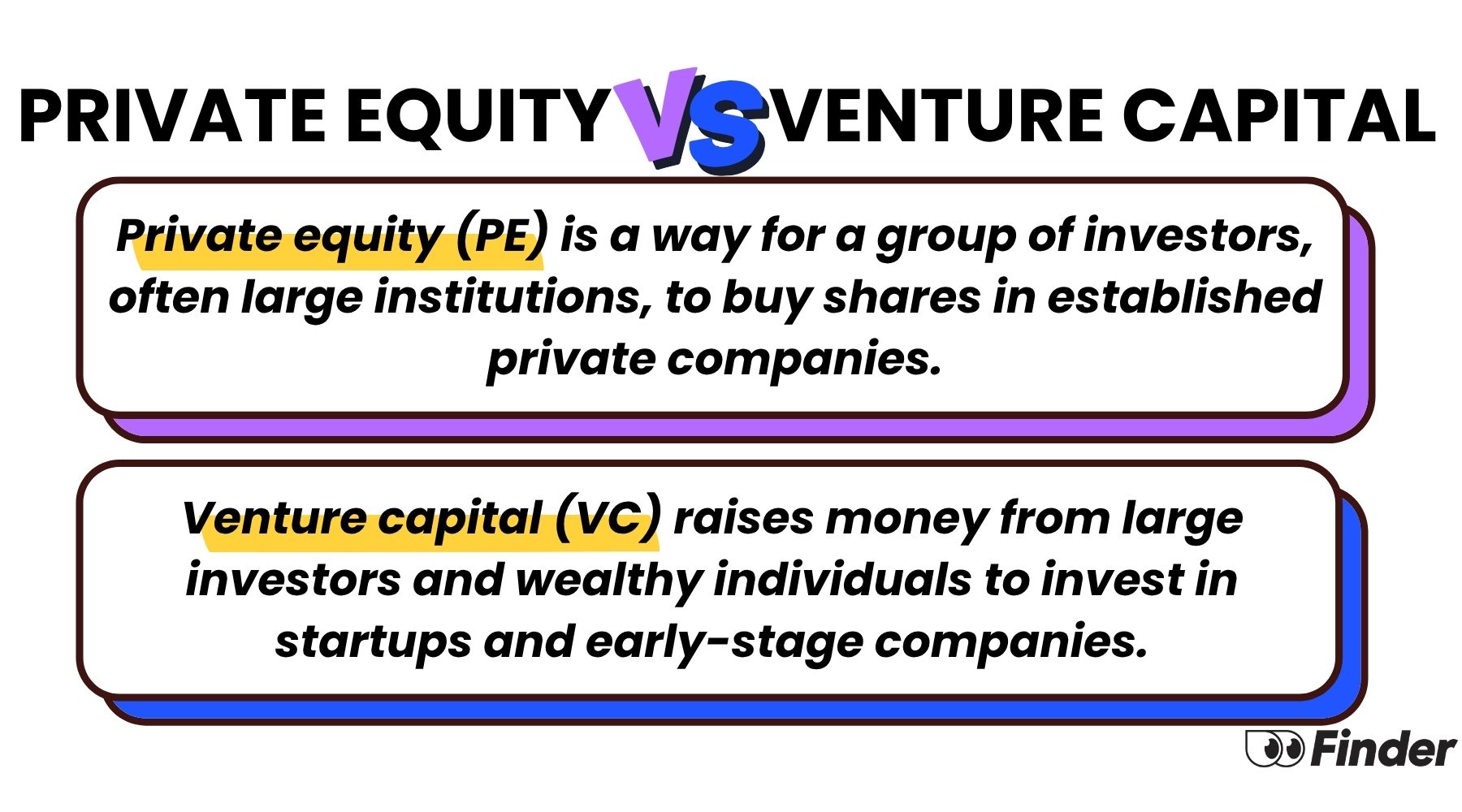Private Equity vs. Venture Capital: A Side-By-Side Comparison

Whether a business is just starting or already established, an infusion of capital can make all the difference in its growth. When a company needs funding, it might turn to a private equity or venture capital firm to help grow the business. However, private equity and venture capital are not the same. They differ in their methods, the types of companies they target and the effects they have. Understanding the difference is crucial.
Private equity vs. venture capital: an overview
| Risk level | High/moderate risk | Low/moderate risk |
| Type of investment | Equity and convertible debt | Equity with leverage |
| Typical industries | Varies | Varies |
| Types of companies | Startups and early-stage companies(1) | Mid to later-stage businesses(1) |
| Typical capital investment | $20 million or less(1) | Several millions to billions(1) |
| Equity stake | Minority stake(2) | Majority stake(3) |
| Typical hold period | 10+ years(4) | 10 years(5) |
| Return profile | More than 10x return targets(1) | More than 15% internal rate of return (IRR)(1) |
Private equity
Private equity (PE) is a pooled investment vehicle that enables a group of investors, usually large institutional investors, to purchase equity in private companies.(3) While some PE firms involve minority stakes, they frequently acquire a majority stake in the business.
In buyout scenarios, once the investment is made, the PE fund can take an active role in the management and direction of the business to help increase its profitability. The idea is to invest in companies with growth potential so the companies and investors can work together to improve the business, with the end goal of selling the company for a profit or taking the company public to realize returns.
Venture capital
Venture capital (VC) is a form of private investment that raises capital from institutional investors, financial institutions and high-net-worth individuals.(2) VC firms invest in startups and early-stage companies with growth potential. In addition to capital, VC firms can also offer strategic guidance and technical or managerial support.
For their investment, venture capitalists typically receive a minority ownership stake in the company. That means while they take part in the rewards, they can also incur significant losses if the company fails. Thus, VC is considered a high-risk form of investing, but it can also have major rewards if the company is successful.
While private equity and venture capital opportunities have traditionally only been available to accredited investors, platforms like SoFi Invest® and Fundrise have broadened access for regular investors.
Our pick for access to ARK Venture Fund (ARKVX)
- Invest in ARK Venture Fund with a $500 initial minimum and $5 subsequent minimum.
- All transaction fees for interval funds are waived for a limited time.
- User-friendly investing platform with access to a team of credentialed financial planners.
Key differences
There are several key differences between private equity versus venture capital.
- Stage of business. Venture capitalists generally invest in businesses in the seed or early stages, allowing them to benefit as the company grows. PE firms generally step in later, after the company is generating regular revenue and has shown proven returns.
- Investment size. There is an enormous difference in the size of investment made by PE versus VC firms. Private equity firms generally invest more than $100 million, while venture capital firms typically invest $20 million or less, though later-stage VC rounds can exceed that. Ultimately, the investment value depends on factors like the company, industry and revenue.
- Type of investment. Venture capitalists typically invest using equity. PE firms often combine equity and debt, especially in buyouts, to take on a majority interest in a company. However, some PE investments are minority, growth-focused.
- Ownership stake. PE firms generally take a controlling stake in companies, while venture capitalists take a minority stake. VC firms can earn 10x returns, while PE firms generally seek returns of 15% IRR or more.
- Involvement. Venture capitalists are typically less involved in the day-to-day operations. PE firms, particularly in buyouts, are much more involved and often take a hands-on role, given their ownership stake and hefty investment.
- Risk level. Venture capitalists generally face a higher risk with their investment because they are investing in a business in its early stages. With a new company, there is no history of demonstrable success, so it is a gamble for investors seeking a return. PE firms, on the other hand, can review financials to ensure a company is profitable before investing.
Bottom line
Both private equity and venture capital are a way for companies to grow their business through adding capital. However, a few key factors differentiate private equity and venture capital. Investor objective, equity stake and investment size all play a major role in distinguishing one from the other.
Before committing to an investment, consult a financial advisor for personalized advice regarding your portfolio.
Frequently asked questions
What are some examples of private equity firms?
Leading private equity firms include Alpine Investors, Bain Capital and Thoma Bravo.
What are some examples of venture capital firms?
Top venture capital firms include Andreessen Horowitz, General Catalyst Partners and Bessemer Venture Partners.
Is venture capital the same as private equity?
No, venture capital is not the same as private equity. Venture capital focuses on early-stage startups with high growth potential, while private equity typically targets mature companies. Both raise capital from institutional investors and high-net-worth individuals, but they differ in investment size, ownership structure and risk profile.


